“When I consider the heavens, the work of your fingers, the moon and the stars, which You have ordained, what is man that You are mindful of him?”
Psalms 8: 3, 4
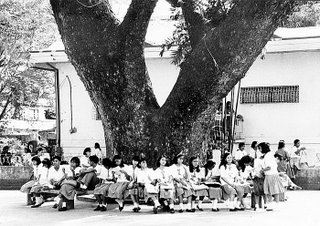 Long before the modern movie classic “Schindler’s List” secured Steven Spielberg’s place in cinematic glory, he directed a movie blockbuster titled “Jaws.” Starring Richard Dreyfuss, George Shaw, and Roy Scheieder, the movie told the story about how the small tourist town of Amity was terrorized by a great white shark weighing about a thousand pounds. Hmm, sounds like somebody I know!
Long before the modern movie classic “Schindler’s List” secured Steven Spielberg’s place in cinematic glory, he directed a movie blockbuster titled “Jaws.” Starring Richard Dreyfuss, George Shaw, and Roy Scheieder, the movie told the story about how the small tourist town of Amity was terrorized by a great white shark weighing about a thousand pounds. Hmm, sounds like somebody I know!
In one exciting scene, when the shark was attacking their boat, Dreyfuss, playing the role of a scientist, screamed at Scheieder, the captain, to position himself at the edge of the boat. Scheieder, who was holding on to dear life as the shark began to chew up the boat, screamed back, “What the hell for?” And Dreyfuss, the cool analytical scientist who was holding a camera at that time, explained, “I need you for scale!”
Dreyfuss was saying, in terms of photography, that it wasn’t enough to simply take the picture of the shark. Why? Any viewer who looks at the picture will not have a clear idea as to how huge the shark was. With Scheieder in the picture, the viewer will have a visual guideline with which to estimate the size of the shark. Take the picture above of the acacia tree. By including the students seated around the tree, I was able to give the viewers an idea of how massive the tree is.
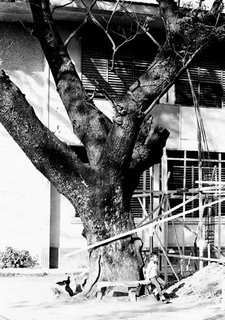 How tall is that tree in the picture above? By including the child at the lower right hand corner, I can give the viewers an idea as to how high the tree is.
How tall is that tree in the picture above? By including the child at the lower right hand corner, I can give the viewers an idea as to how high the tree is.
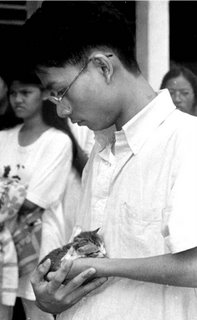
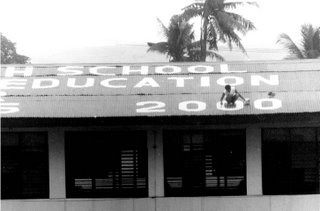
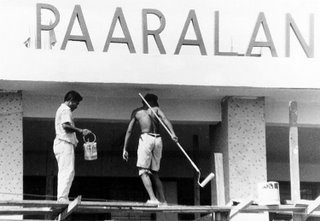
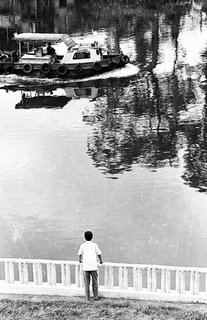 How small is that kitten in the picture above? How big are the letters being painted on the roof by the worker in the second picture? How big are those stone letters spelling out “paaralan” in the third picture? How big is a river tugboat in the last picture?
How small is that kitten in the picture above? How big are the letters being painted on the roof by the worker in the second picture? How big are those stone letters spelling out “paaralan” in the third picture? How big is a river tugboat in the last picture?
In order to give your viewers an idea of their relative sizes, you need to include certain elements (the student in the first picture, the painter in the second, the construction workers in the third, the student in the last picture) in order to help guide the viewer in judging their sizes.
How to Achieve Scale
Friday, August 03, 2007
Photojournalism (15): Scale
Wednesday, August 01, 2007
Photojournalism (14): Quality and direction of light
| Free articles and cheat sheets from Digital Camera World (Tech Radar): Best camera settings for sunsets (free photography cheat sheet) How to predict the angle of sunrise for the perfect landscape photography How to capture a silhouetted sunset Sunset photography: how to balance exposures and get accurate colours Color temperature scale (see also graphic at the bottom of this page) |
“In the beginning, God created the heaven and the earth. And the earth was without form and void; and the darkness was great upon it. And God said, Let there be light, and there was light. And God saw the light, that it was good.”
One thing I will emphasize over and over again is that without light, photography is not possible. When we discuss films later on, you will know that it is the action of light upon the silver halide compound that produces the image. Light really is good!
Always consider the quality of light
The main source of light for photography is the sun and as the sun moves across the sky, the quality of light changes. If you want to be a good photographer, you should always consider the quality of light.
(The sun doesn’t really move across the sky, as you will remember from your basic science. It’s just how things appear to us, okay? If I remember my college philosophy class correctly, the term is “phenomenological.”)
Avoid shooting at noontime
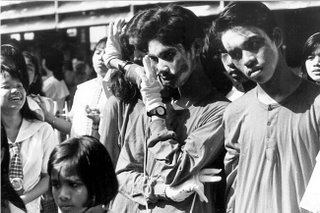
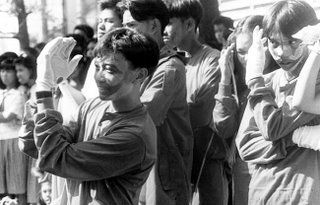
Avoid shooting, as much as possible at noontime; the harsh sun will create deep, ugly shadows underneath people’s eyes, like in the pictures above.
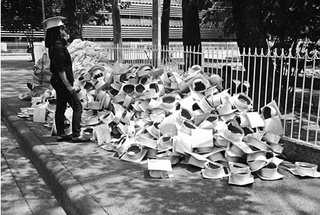
If both you and your subject are in the shade, then it’s okay to shoot. But avoid situations like in the picture above where the leaves of the trees create uneven, scattered areas of light and shadows. Some Filipino photographers call this the “chocolate effect.”
The golden hours
Photographers call both sunrise and sunset as the “golden hours” because these times provide a gorgeous light that’s very suitable for photography. At dawn, the light is dominated by soft pinks while at sunset, the colors become more golden. (See the color temperature graphic at the bottom of this page.)

With the picture above, I first noticed the “golden light of the dying sun.” Okay, okay, I know such descriptions are absolutely corny, but hey, girls just love this corny stuff! I got my beloved Canon AE-1 Program camera fitted with a 50 mm, f/1.8 lens and loaded with Kodak Gold 100. I asked my cute nephew JR (who looks like me) to stand in that spot. I wasn’t satisfied however with the set-up, and when I looked around, I saw my rocking chair. I got the chair, asked JR to sit on it, and he just naturally struck that great pose. JR really takes after me! I love that golden light, the deep black shadows, JR’s shadow on the rocking chair, the chair’s shadow on the wall ... I just love photography!
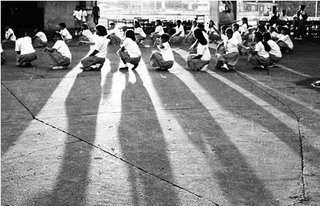
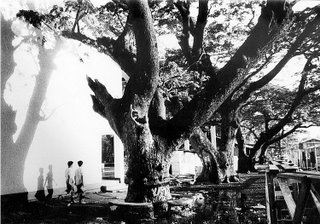 With black and white photography, of course, we don’t talk about colors of sunrise and sunset. At these times, what you should look out for as your subject are dramatic, long shadows created by the sun’s position, like in the pictures above.
With black and white photography, of course, we don’t talk about colors of sunrise and sunset. At these times, what you should look out for as your subject are dramatic, long shadows created by the sun’s position, like in the pictures above.The direction of light
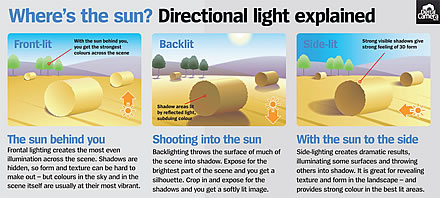 |
| Free infographic from Digital Camera World / Tech Radar (click the image to see a larger-sized image) |
Train yourself to notice and to use aesthetically the direction of your light source. Look at the picture below for example; by the way that student’s face is illuminated and the long shadows behind him, you can guess (quite correctly) that the light comes from the late afternoon sun.
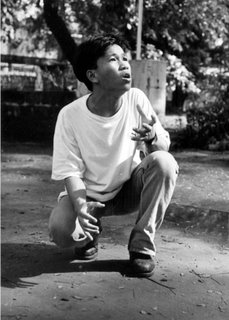 There are primarily three ways by which a subject can be lighted: from the front, the side or the back.
There are primarily three ways by which a subject can be lighted: from the front, the side or the back.1. Front lighting - your light source which may either be the sun or artificial light sources like your camera flash, comes from directly behind you. Front lighting gives you great colors and a lot of subject detail. On the minus side, these details are flat. Since your light source directly illuminates your subject, the shadows created are placed behind the subject. Your picture will be two-dimensional, lacking depth. (Remember our discussion of perspective and depth?)
By the way, speaking of shadows, W. Henry Fox Talbot, considered as the father of photography, defined photography as “the art of fixing a shadow.” We will discuss shadows (“cast” and “contained”) as a photographic subject later on.
A common source of front lighting is your camera flash. We will discuss later how to use your flash and the common problems in using it.
2. Sidelighting - this kind of lighting produces the strongest three-dimensional effects. In our discussion later on, you will learn that sidelighting is one good way of creating the illusion of depth in your pictures. Soft sidelighting, however, is best for portraits and landscapes.
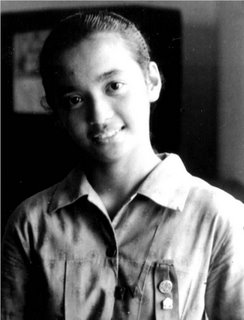 With portraits, avoid having half of the face in deep shadow with no details, and with the other half in strong highlight. Unless, of course, if you’re striving to create a highly dramatic effect. It’s usually better to have some details in the shadow side of the face, like in the picture above of a very pretty Girl Scout. (Professional photographers on this topic talk about the “split ratio” between highlights and shadows, but that’s too technical for us.)
With portraits, avoid having half of the face in deep shadow with no details, and with the other half in strong highlight. Unless, of course, if you’re striving to create a highly dramatic effect. It’s usually better to have some details in the shadow side of the face, like in the picture above of a very pretty Girl Scout. (Professional photographers on this topic talk about the “split ratio” between highlights and shadows, but that’s too technical for us.)3. Backlighting - generally, you should avoid shooting against your light source since this creates high contrast and greatly reduces details in your subject. The technical term for shooting against the light is “contra luz.” In French, it’s called “contre jour.” If you’re shooting portraits, for example, your background will turn out bright, while your subject’s face will turn out in deep shadows. That’s because your camera’s light meter will be fooled by all that background brightness.
Several ways of counteracting this problem are:
(1) to use white or silver colored boards to reflect some light back to your subject; and
(2) to use your camera flash to throw some light into your subject.
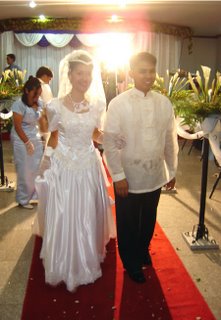 In the example at the left, I wanted to take the picture of the bride and groom as they were walking away from the altar. Problem was, I was shooting against a very bright video light. Using the flash of my borrowed digital camera, I was able to get some details in the faces of the bride and groom. The picture came out a good shot, capturing the drama, emotions and excitement of a wedding. (Hey, if you don’t believe me that this is a good picture, I won’t treat you out to pizza! For those of you who think this is a good picture, e-mail me and then we’ll have pizza!)
In the example at the left, I wanted to take the picture of the bride and groom as they were walking away from the altar. Problem was, I was shooting against a very bright video light. Using the flash of my borrowed digital camera, I was able to get some details in the faces of the bride and groom. The picture came out a good shot, capturing the drama, emotions and excitement of a wedding. (Hey, if you don’t believe me that this is a good picture, I won’t treat you out to pizza! For those of you who think this is a good picture, e-mail me and then we’ll have pizza!)Photography books and magazines will tell you about how to use “fill flash” and “fill flash ratios” but these topics are a little bit complicated at this point in our series. Anyway, most modern cameras will automatically choose the correct setting for your flash even in difficult lighting situations.
If you have no choice but to shoot your subject however, you have to choose which is more important - the highlights or the shadows. If you choose to play up the background, you will be creating a silhouette. More on silhouettes later, I promise.
Be careful when you are shooting directly at the sun
You could seriously injure your eyes when shooting directly at the sun, as what happened to famous astronomer Galileo Galilei. He destroyed his right eye from constantly looking at the sun through his telescope. What you should do in this situation are:
(a) place a piece of paper between your eyes and the camera’s viewfinder to soften the light striking your eye;
(b) place the sun to the side, and if possible, hide it behind objects like leaves or branches, as in the picture below.

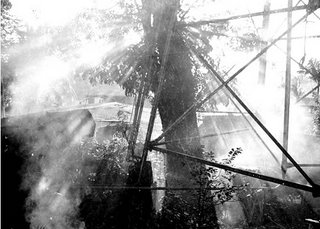 The camera flash as a light source
The camera flash as a light sourceThe camera flash is one of the most useful accessories for any camera system, whether an SLR or a compact 35 mm compact, digital or film-based. In a lot of situations, you’ll only be able to shoot if you have a flash on your camera. But a flash often creates harsh shadows and flat lighting that often destroys the mood of a picture. (In some instances, like theater presentations, you may not be allowed to shoot pictures as this will destroy the lighting set-up.)
Thus, photographers often use “available light” (a.k.a. “existing light” or “ambient light”). This means using film with a high ISO rating, slow shutter speeds and wide apertures, and sometimes placing the camera on a tripod.
Speaking of flash … Sebastião Salgado is considered as the best ever photojournalist in the world. Born into an affluent Brazilian family, he took graduate studies in economics in France. Yet, his pictures have always been of struggling workers, the powerless and the dispossessed. He didn’t have any interest in photography until his wife, Leila, an architect, gave him a camera as a gift. The very first time he looked through the viewfinder, he was hooked on photography. Know what? Salgado doesn’t use flash when shooting his pictures, relying only on available light.
That does it! First thing tomorrow morning, I’m going to throw away my flash!
Relevant discussion on color temperature and color wheel: Photojournalism (8): Color or black and white?
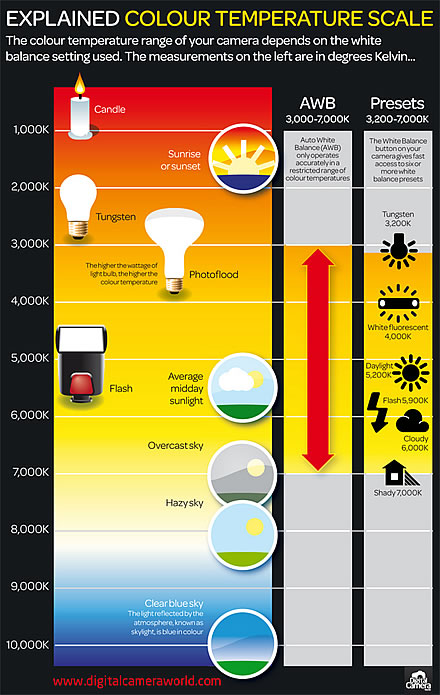 |
| Color temperature scale (free cheat sheet from Digital Camera World / Tech Radar) |
Monday, July 30, 2007
Photojournalism (13) : Cybill Shepherd, Ryan O’Neal, Mary Stuart Masterson, Robert Downey Jr, love, friendship, second chances, and a roll of film
The perceptive ones among will have noticed by now one or two things, maybe three, about the pictures I have used in this series on photojournalism.
One, most of the pictures are black and white. That’s because black and white photography is my personal choice for artistic expression. I’m not really good in choosing colors or color combinations. What I do know about colors is that I really like green, brown and blue.
Two, as you mouse over the pictures, you will see certain data about the pictures – when and where the pictures were taken; the specific topic the picture is being used to illustrate, and the person who took the picture (ehem! ehem!)
Three, the pictures were taken many, many years ago, and thus, to the perceptive and technically minded persons among you, they appear to have diminished somewhat in terms of quality. Some of the pictures (primarily taken on Kodak Tri-X, my favorite monochrome film) I have managed to have digitally scanned into CDs. For most of the pictures in this series, however, I have been processing them in this way:
(1) Using Microtek Scanmaker 3800, I scan the black and white pictures with the options – true color, 150 dpi, BMP file format;
(2) Using Adobe Photo Home Deluxe Edition, I convert the BMP pictures into black and white pictures in JPEG format; and
(3) Using Macromedia Fireworks MX, I edit and optimize the pictures – cropping, sharpening, and fiddling with the auto levels or brightness and contrast controls.
Photography and technology
“From today, painting is dead!” This was the cry of doom and despair by French painter Laroche way back in 1839 when photography was introduced to the world. History has proven him wrong, however; painting is still very much a flourishing art form. With the advent of personal computers and their revolutionary impact on almost all aspects of life, it seems it’s now the turn of photographers to exclaim, “From today, photography is dead!”
Photography is a technology based art form. Since 1839, it has always been a silver halide based art form, meaning we’ve got to have film in order to have pictures, until today that is. Now, computers and cameras have been combined to produce film-less digital cameras.
As I told you, it’s now very, very, very difficult to find here in the Philippines black and white photography materials - film, photo paper, darkroom chemicals like developer and fixer. Two years ago my cute nephew JR, who looks a lot like me, took up photography in DLSU. He told me that his batch was the last to use film-based photography. The next year, he said, DLSU was turning to digital photography.
An advertising executive told me that several years ago Kodak was planning to phase out film and replace it with digital technology. But one photo magazine I scanned in SM Megamall said that Kodak’s digital photography business grew by only about one percent and that film has made a comeback. Hoo-ya! I love the smell of developer and acid fixer in the morning!
The picture below (circa 1992) shows you some of my former journalism students and our makeshift, no ventilation, dinky darkroom where we developed our black and white films, and printed out our pictures using Oriental glossy photo paper and Atlas developer and fixer.
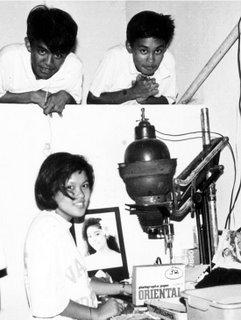 Anyway, please let me tell you a story about a movie that centered on a roll of film.
Anyway, please let me tell you a story about a movie that centered on a roll of film.
Chances are that you have seen the movie “Chances Are” starring Cybill Shepherd, Ryan O’Neal, Robert Downey Jr and Molly Ringwald. It has been shown on Channel 9 several times already. It’s a feel good movie which tells the story of a journalist who took a picture of a corrupt judge accepting a bribe from an accused whom he had set free earlier. The man who dies quite unexpectedly leaving a lonely widow played by Cybill Shepherd, manages to convince the angels at heaven’s gate that it wasn’t his time yet, and he is given a chance to go back to earth in the body of Robert Downey Jr. The angel however fails to erase all the memories of the man’s past life from Downey’s psyche.
Twenty three years later - after the pictures were taken, after the man died, after the character played by Downey was born, after the birth of Cybill’s daughter played by Mary Stuart Masterson - well, she falls in love with Downey. But since Downey’s character had all the memories and mannerisms of Cybill’s husband, guess what happens when daughter brings the young man home to mama?
You guessed it - Downey falls in love with Cybill, much to Mary’s bewilderment, Cybill begins to care for Downey, and to add to the fun and confusion, Ryan O’Neal, who plays Cybill’s best friend, has been waiting patiently for 23 years to win Cybill’s affections.
Well, all things end well. Downey falls in love with Mary after the angel finally catches up with him and erases all memories of Cybill’s former husband from his psyche, and Ryan finally weds Cybill, their longtime friendship finally blooming into love!
Oh, and the corrupt judge also gets to be finally exposed for what he was; Cybill finds the roll of film taken by her husband 23 years earlier, has it processed, and the picture of the judge accepting a bribe gets published in all the newspapers.
You might ask, what’s the point of this mini movie review? Well, the roll of film gets processed after 23 years. It is highly improbable for that roll of film to still retain the latent images after that long period of time!
Well, it’s just a movie of course, and technical things like these should not get in the way of love, friendship and second chances. We’re all suckers for sappy love stories and wonderful endings! Besides, what did poet Samuel Taylor Coleridge say about fiction? He said, “Fiction is the willing suspension of disbelief.”





